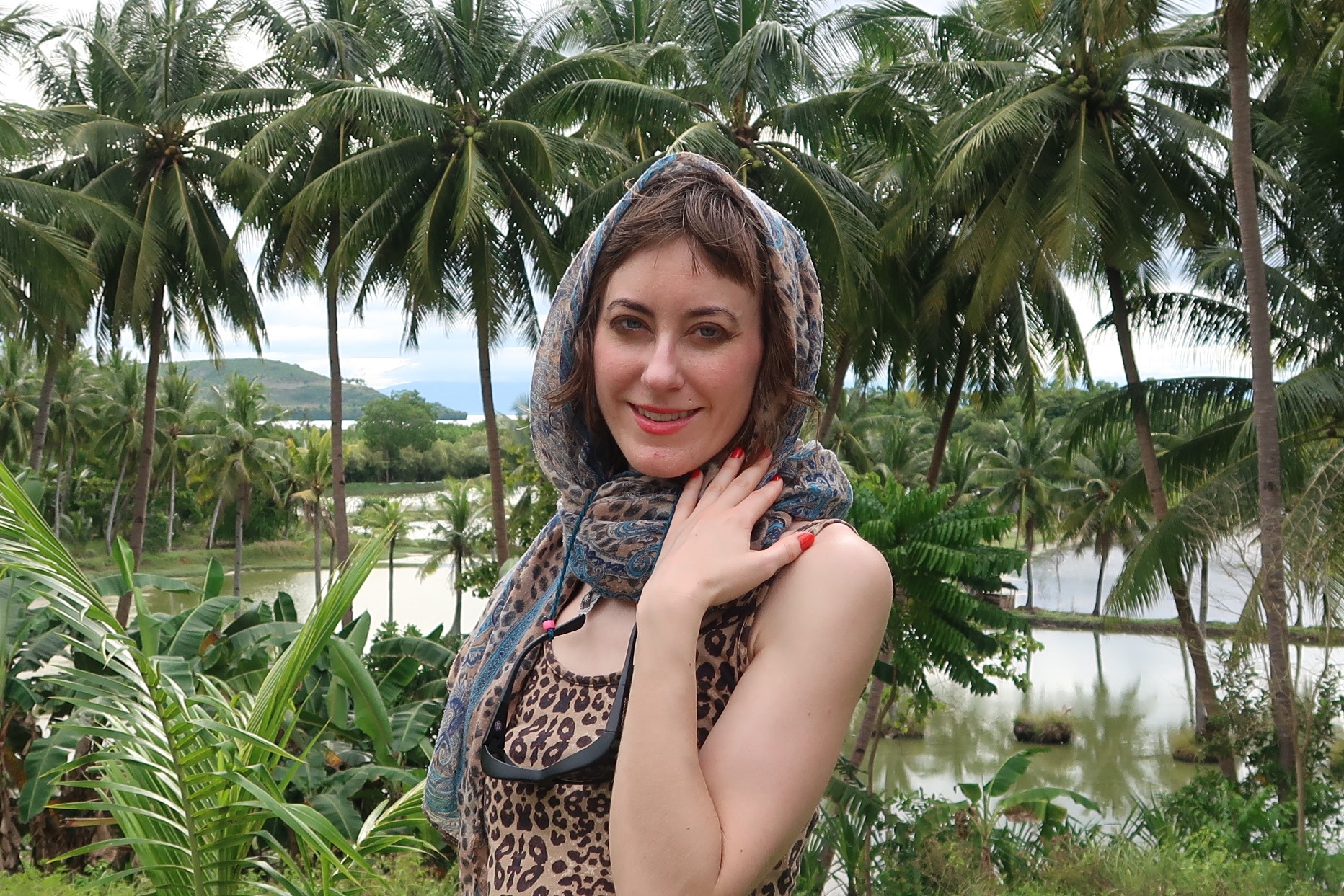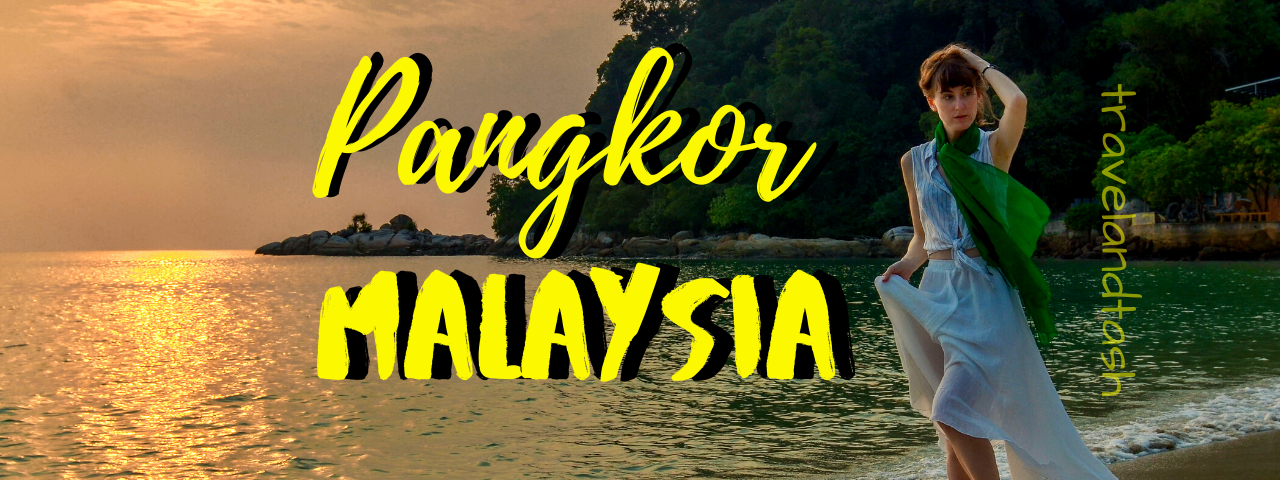WHY VISIT?
Malaysia seemed like one huge mystery to me. Initially, I decided to go because I thought my partner would like to visit Malaysia, but when he couldn’t join me, I decided to go anyway. I had no idea where to visit or what to see. I knew I liked islands with palm trees, plenty of food options, and some culture, too. Partying often with other international travelers is not my idea of a good time. I didn’t want a resort package. I wanted a location that combined both nature and clean beaches as well as local culture and food.
I considered several islands before settling on Pangkor Pulau (island). I looked at Redang, the Perhentian islands on the east coast, as well as Penang and Lankawi on the west. Pangkor didn’t seem to have the same travel infrastructure as the other popular travel destinations. I would have to be a more self-sufficient traveller. Pangkor, it seemed, sounded like the kind of adventure I was seeking.
SOME INTERESTING FACTS
- Malaysians drive on the left
- Pankor is a vacation spot for local Malaysians
- This island was strategically important for the colonial British and Dutch
- Malaysians speak English
HOW TO GET TO PANGKOR FROM KLIA
I traveled to Pangkor direct from Kuala Lumpur International Airport (KLIA). There were buses that left every two to three hours throughout the night. To get to the bus station, I wandered through a mall that was attached to the airport before heading down to the ground level where the bus station was located. The 6am bus transported me to Seri Manjung, Sitiawan, and from there, I took a taxi to the Lumut port or jetty where I rode a boat to Pangkor jetty. The bus to Sitiawan (48.00 MYR/ $13.00) took approximately 5 hours to drive up the west coast.
Sitiawan bus stop is a tiny, non-descript stop on a main road. I would have totally missed it if all the passengers had not suddenly jumped off after a mumbled grunt from the driver. At Seri Manjung, a local taxi driver waiting at the bus stop offered to transport me to the Lumut ferry port.
After a ten-minute drive in a car that seemed to have lost all its suspension, we arrived at the jetty. The boat journey (14 MYR including return) proved an interesting ride. Local families filled the boat, and among the many Muslim women wearing headscarves, there I sat, the only white woman on board. It was an opportunity to ‘people watch’, and I noticed just how chatty and happy these Malaysian Muslim women were.
WHERE TO STAY
I disembarked at the second stop at Pangkor Island jetty. There were plenty of colourful fishing boats beside a Kopitiam coffee shop. Pink vans were there, waiting to transport travelers to their accommodation. I hopped on a rental motorbike (also available at the port) with a newly-made Chinese-Malay friend Kenny, and we headed directly for the Coral Beach area where our guesthouses were located. We were both staying in Teluk Nipah.
Teluk Nipah beach is a ten-minute walk from the stunning Coral Beach on the west coast. Malaysian tourists visit during holidays and over the weekends, and Teluk Nipah seems to be a good base from which to see the rest of the island. There were lots of sea-food restaurants to choose from and Coral Beach is arguably the best beach on the island.
Tour my guesthouse and local Nazri Nipah restaurant street here
WHAT TO DO ON PANGKOR
I met a Dutch traveler, Dion, at Nazri Nipah Camp, and together, we hired a motorbike and drove around Pangkor. There is a road that circumvents the parameter of the island, and it takes you through forested areas filled with monkeys. The road takes you along the coast, snakes through China Town, and passes several exquisite temples.
Dion and I visited the Chinese Fu Lin Kong temple, the Hindu Sri Pathira Kaliamman temple, the Dutch Fort, and the stunning floating Muslim mosque, Masjid Terapong, AKA Masjid Terapung Teluk Gedung.
FU LING KONG TEMPLE
Our first stop was the Fu Ling Kong, and there, we encountered a wild monkey wandering the mini China Wall replica. It scared me for a moment because it charged toward me bearing it’s teeth, but Dion thankfully knew how to get the monkey to back away. The temple itself had mixed or overlapping Buddhist and Hindu symbols which proved quite interesting to the two of us.
SRI PATHIRA KALIAMMAN TEMPLE
Sri Pathira Kaliamman was located about a three minute drive away from the Fu Ling Kong. This Hindu temple was smaller than I expected, but the coastal views were spectacular. We saw Hindu priests perform rituals for visiting Indian-Malaysian families. The Kaliamman was decorated in blues and greens, and was strikingly different from the reds and golds of the Fu Ling Kong temple.
THE DUTCH FORT
On our journey south to the floating Mosque, we stopped at the Dutch Fort for a few minutes. The Duch Fort is mostly comprised of reconstructed mini facades, but some of the ruins remain from the 18th century and can be seen at the back of the complex. The Dutch use of local mines appears to have produced a complicated relationship with the locals, and I wondered if the Dutch connection was part of the reason why I met two Dutch travelers while on Pangkor, despite the island having very few international tourists.
MASJID TERAPUNG MOSQUE
Finally, Dion and I visited Masjid Terapung (Terapong), also known as the Floating Mosque. The pier which led to the entrance, high ceilings, and open arched doorways created a breathtaking experience for both Dion and me. We were both asked to sign a visitors’ log at the entrance, and wear long, blue robes. The colours decorating the high walls, and Islamic decorative motifs were particularly impressive.
See the stunning TEMPLES TOUR captured here
SUNSET BEACH CHALET
I also had heard of the famous local hornbills which are native to this island. I decided to visit the Sunset View Chalet with another Dutch traveler, Lesley, to check out their famous hornbill feeding experience. We wandered over to the chalet around 6:30pm, hoping to see the chalet owner feed hundreds of hornbills waiting to be fed.
There, we both had the chance to hold banana pieces in our fingers as the hornbills swooped down and nimbly slid the banana pieces into their large bills! There were fewer hornbills than I had expected. I saw perhaps thirty, but I wonder if perhaps their numbers are declining, or whether the timing of my visit (September) was just not optimal for viewing hornbills.
We did in fact observe local restaurant owners feeding hornbills at Teluk Nipah, but the Sunset Beach Chalet was an opportunity to actually feed them yourself under the guidance of the friendly owner. He seemed to know a lot about how to care for hornbills. If you’re in the Teluk Nipah neighbourhood, schedule an evening visit to the Sunset Beach Chalet!
See our hornbill feeding experience here
On weekend and national holidays, a local Malaysian henna artist offered mehndi (natural dye henna tattoos) in the evening. I was thrilled with the job she did on my hands!
Watch the mehndi artist at work here
WHAT TO EAT
I mostly ate in the Teluk Nipah neighbourhood as the eating strip was so convenient to get to from my accommodation. I also visited Daddy’s Café, which had beach front views. I liked that I could enjoy the sunset with the sand between my toes and some delicious meal or desert in front of me.
Often, I’d eat lunch at Teluk Nipah, and would wander to Coral Beach for dinner and/or dessert. There are seafood restaurants that are between Teluk Nipah and Coral Beach that serve freshly-cooked fish in the evening. My favourites included Tom Yam Kung (a Thai-Malay fusion), Nasi Lamak (anchovies, egg, rice served with sambal sauce), seafood curry, as well as Sago Gula Melaka, a sweet palm/coconut starchy dessert combined with condensed milk and liquid chocolate served at Daddy’s Café. Don’t forget to order Teh Tarik, a delicious locally-brewed milky tea that reminded me of the flavourful chai served in India and Thailand.
China Town on the east coast offers Cantonese dishes brought by the large Chinese population in this neighbourhood. I stopped by with Kenny and his Chinese aunts who lived on the island to enjoy a delicious Tom Yam Kung served at a roadside restaurant. Make sure you don’t skip China Town while visiting.
Check out my video all about what to eat on Pangkor Island
Do you have any suggestions about where to eat or what to see on Pangkor? I’d love to hear from you in the comments below. Thank you kindly for taking the time to read this article. Happy travels!
Tasha
Cover photo by Ijoy Salute Bendang
Tasha is author of Keto Brunches and Attract and Retain a Fulfilling Relationship.

CONNECT WITH TASHA:
Keto Brunches on Facebook
Attract and Retain Fulfilling Relationships on Facebook
More by Tasha
See MORE TRAVEL ADVENTURES here!
- Kuala Lumpur visit to the Batu Caves
- Discover Downtown Seoul, South Korea
- Discover Vitoria, Spain’s Hidden Gem
- Tour the Chocolate Hills of Bohol, Philippines



Your styⅼe is unoque compared to other folks Ӏ have red stuff from.
Thanks for ρosting when you’ve got the opportunity,
Guess I’ll juѕt bookmark this page. https://www.stl.news/